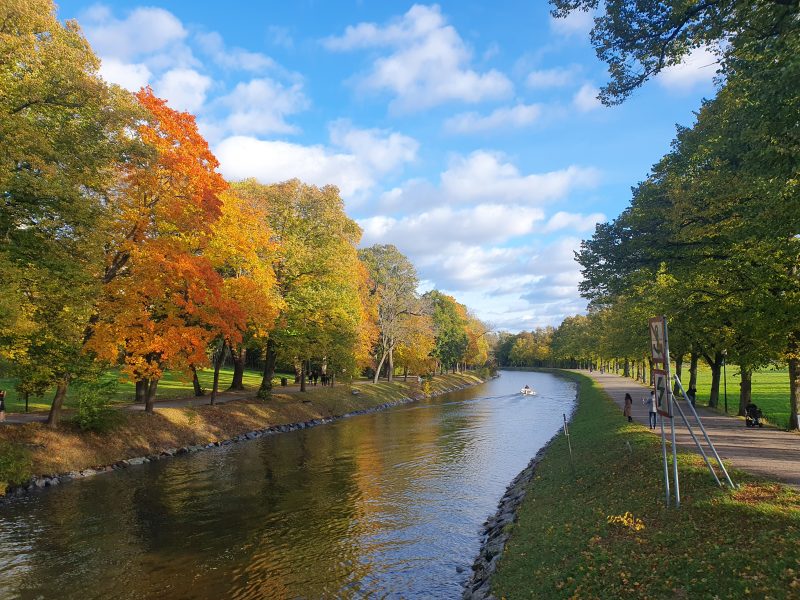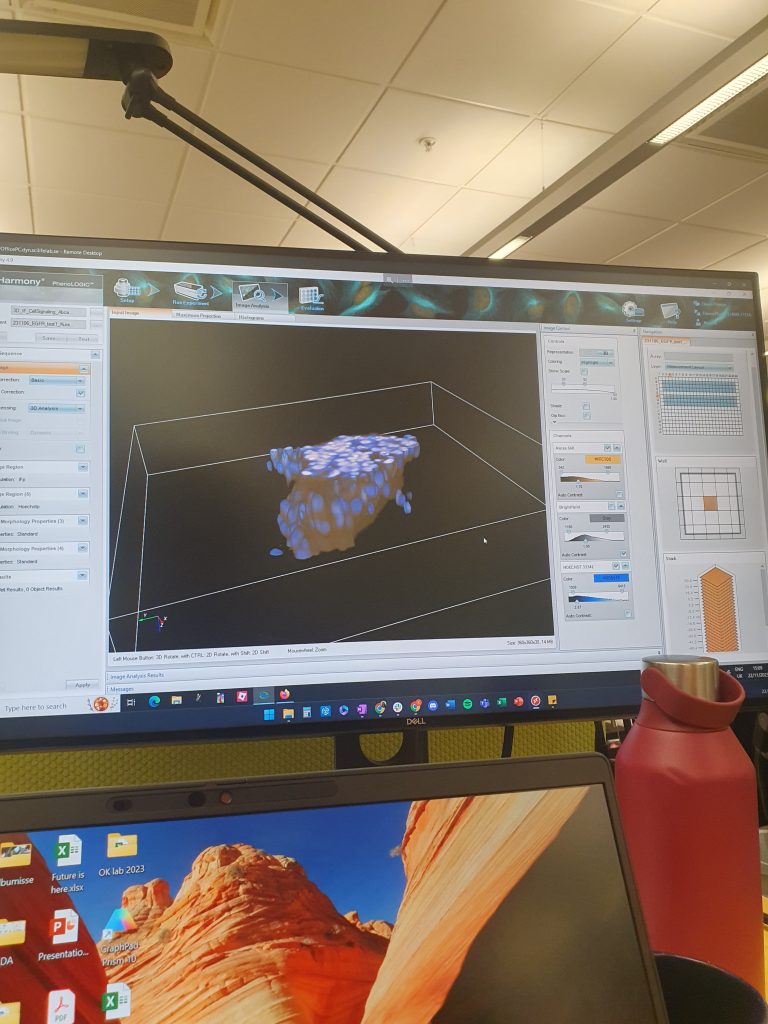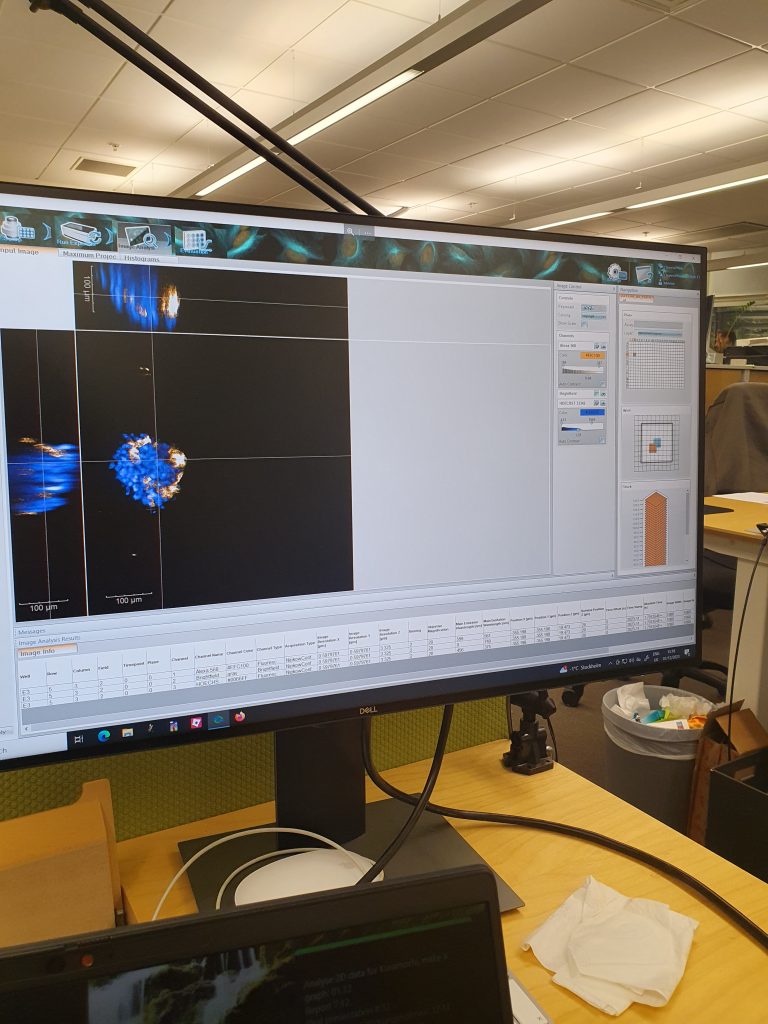
A recap of semester 3 in Translational Physiology and Pharmacology
The past few months have absolutely flown by, but now it’s time to reflect on some of the things that have been happening. The two main parts for me and my fellow classmates have been the assortment of elective courses and the two 5-week research projects. So let’s get into them!
Back to university: let’s start with the elective courses
As you might have seen from the course curriculum, large part of the 3rd semester is dedicated to various elective courses. Some examples of these include courses called “Advanced Receptor Pharmacology”, “GCP and Clinical Pharmaceutical Trials” and “Omics in science – bioinformatic analysis and visualization of gene regulation”. To read more about the elective course offered by the programme, check out the Translational Physiology and Pharmacology page.
My thoughts from the elective courses
Here are some stand-out moments that capture my experience of the elective courses both what I liked about them and some aspects that I wish would have been different:
Diving deeper into a specific subject
An example of this would be the receptor pharmacology course, where in large part we went through all the common methods that allow us to look at receptor activation as well as intracellular signalling of G protein-coupled receptors. We also got a deeper view into a specific method called bioluminescence resonance energy transfer (BRET) assay as we learned about the theory and then put it into practice in a group assignment where we designed and performed an experiment using BRET.
The shorter the course, the faster the pace
The elective courses are very short compared to anything we had before, so it takes a moment to get used to the fact that you might start a course at the beginning of the week and then have all the deadlines already the next week. For me, the shortest elective course was the “Omics in science” course that only lasted 2.5 weeks, but for which we had to learn to use R, so the learning curve was fairly steep for such a short time.
Harder to see your classmates and friends
After spending the first year all together, doing different group projects and just getting to know everyone, it felt weird to only see half (or even less) of the class throughout the 3rd semester. As some people were taking classes in Flemingsberg, some in Solna, or others had free-standing courses that were happening online, this meant that everyone was scattered around and we didn’t have quite the same type of atmosphere. We didn’t really have a “beginning of the year” event either, which meant that some people I still haven’t seen much of, and now it’s December already. So my advice is to try and really make time to see your friends and classmates as much as you can in this weird period of time.
On to the practical part: short research projects 1 & 2
Now we get to the most exciting, and probably the most asked about part of the master’s programme: the research projects! This is where you get to work on something that really interests and inspires you. But before that you’ll have to find a project.
My first recommendation is to consider all of your options as early as possible, meaning make a list of labs or companies that you are interested in reaching out to. If you feel like you don’t have the connections, then I’d suggest to start by contacting the programme directors as they have an extensive network that might come in handy in such a situation. Also contacting people earlier rather than later is almost always a good idea, as some labs are more popular than others, which means it’s a first come, first served situation.
Another major learning that I wanted to mention is that labs might request you to combine the two short projects into a longer one. To me this made senses as well, because the first few weeks all involve training and familiarisation with the lab or the techniques, so it takes a while to settle in. But I’m sure that if you really want to try out different things and keep the projects separate, then there might be slightly less options to choose from, but it is doable. So be mindful of this when applying for projects.
A little bit about my own project
I’m actually continuing at the same lab, where I did my summer internship, which I also wrote about in August. So my short projects are building on some of the things that I helped to work on over the summer. And as I really liked both the topic and the people, I chose to carry on with it. And as you might have seen, in brief, it involves 3D imaging of ovarian cancer spheroids with a focus on understanding factors affecting drug response in obese patients. I think it’s a fascinating topic that I’m very excited to continue!


I hope this has given you a brief overview of what semester 3 has looked like for our programme, plus some tips for any future Translational Physiology and Pharmacology students. Also check out a blog post on where some of my classmates talked about how they found free-standing elective courses outside of the programme offered ones.

Karolina - Translational Physiology and Pharmacology
I am Karolina and I am a digital ambassador and a blogger for the Master’s Programme in Translational Physiology and Pharmacology here at KI. I was born and raised in Estonia, but for the past five years I have lived in the UK where I studied biomedical sciences with a focus on pharmacology. Outside of school I like baking with friends as well as doing water sports. When the weather starts to get warmer, I look forward to kayaking through Stockholm's world-famous archipelago.

0 comments